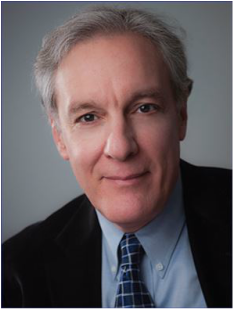 Dale Bredesen
Dale Bredesen What constitutes crazy talk with respect to Alzheimer's treatment may be a matter of opinion. Click 'Read More' below to see where the battle lines are being drawn.
New content for this site is on pause while I write a biography of neuroscience researcher and meditation teacher Shinzen Young. Feel free to browse. Reach out to me if you wish. Check out my new webpage for the book at: www.shinzenbook.com
The most exciting frontier in human knowledge right now is the human brain. We focus on sharing research that has a practical bent: food, exercise, sleep, memory improvement, supplements and so on. We also cover personal experiences with brain and mind training. Occasional guest writers share their perspectives on brain enhancement and scientific discovery. Enjoy!
|
By Paddy Kamen, publisher BetterBrainBetterLife.com  Dale Bredesen Dale Bredesen Is it possible to turn Alzheimer’s around, to have someone walk back from a diagnosis, return to work, recall foreign languages that were lost to them, and re-grow hippocampal volume? The latest research says yes, but is that research sound? This article covers the details of this groundbreaking research, along with criticism of it. What constitutes crazy talk with respect to Alzheimer's treatment may be a matter of opinion. Click 'Read More' below to see where the battle lines are being drawn.
1 Comment
 Marvin Berman, Ph.D. Marvin Berman, Ph.D. Infrared Light Helps Dementia Patients We're pleased to welcome Marvin Berman as a guest writer. His work with depression, anxiety, addictions and learning disabilities is now augmented by his research into near-infrared light stimulation (NIRS) to the brain. As you will read, he is seeking dementia patients for a two-year study into NIRS combined with neurofeedback. In this, the International Year of Light, Dr. Berman's research is both timely and very promising for humankind. By Marvin H. Berman, Ph.D. A diagnosis of dementia can be terrifying to patients and their loved ones. Some psychologists are suggesting that we should not even use the word ‘dementia’ when describing test results, saying it is preferable to talk about the ‘memory challenges’ and ‘executive functioning deficits’. The wife of a patient of mine who is struggling with short-term memory loss and expressive aphasia (can’t find the right word), recently told me she feared that if her husband was told that he probably had Alzheimer’s, he might commit suicide. She therefore spent countless hours and huge sums of money trying different methods to improve his condition but wouldn’t tell him what she knew and forbade the doctors from informing him directly of his diagnosis. But avoidance and denial create tremendous stress on the family, coloring all interactions to the point where everyone puts their energies into ensuring they don’t say something they shouldn’t. Instead of denial, families need to spend time talking about what’s really important, namely the time they spend together, including their feelings about the unknowns they are all facing as the disease progresses. Finding ways to support one another takes time and thought and support from doctors and other experts, as well as the growing dementia-support community. What patients and families need most is a sense of hope that something can be done to stop the progression of memory loss. Several hundred drug trials worldwide have so far been unsuccessful and interest is now focusing on new alternative approaches. As a neuroscientist, clinician and researcher (I founded the Quietmind Foundation and Quietmind Associates Brain Enhancement and Treatment Center in Plymouth Meeting, PA, 15 years ago), I’ve been working with brainwave biofeedback or neurofeedback (NFB), and near-infrared light stimulation (NIRS) to the brain for the past seven years. I’m very encouraged with the results we’re seeing with these technologies and I believe they hold great promise for those affected by neurodegenerative diseases including dementia and Parkinson’s disease.  Lauren Sergio Lauren Sergio By Paddy Kamen, Publisher, BetterBrainBetterLife.com A brain that is in trouble can’t allow you to think and move at the same time. So says Lauren Sergio, Ph.D., professor in the School of Kinesiology & Health Science at Toronto’s York University. Sergio and her colleague, Ph.D. candidate Kara Hawkins, used this fact to develop a simple test that predicts with over 80 percent accuracy who is at risk of developing Alzheimer’s disease. Her test should frighten everyone who has a parent with this diagnosis.  By Paddy Kamen, Publisher, BetterBrainBetterLife.com ALS may be the cruelest, most severe neurological disease,” says Clive Svendsen, director of the Regenerative Medicine Institute at the Cedars-Sinai Medical Center in Los Angeles. Fortunately, Svendsen and his colleagues appear to have found a potential treatment for ALS, using stem cells from patients’ own bodies. “In these studies, we turned skin cells of patients who have ALS into motor neurons that retained the genetic defects of the disease,” says Robert H. Baloh, lead researcher and lead author of the article, published in the October 23, 2013 issue of Science Translational Medicine. “We focused on a gene, C9ORF72, that two years ago was found to be the most common cause of familial ALS and frontotemporal lobar degeneration, and even causes some cases of Alzheimer’s and Parkinson’s disease. What we needed to know, however, was how the defect triggered the disease so we could find a way to treat it.” |
Subjects
All
Join Our Mailing List
Promise: Just interesting stuff and not too often! |
